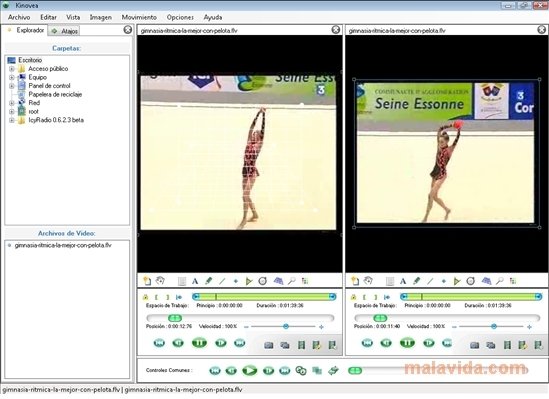

- KINOVEA TEXT OUTPUT ON VIDEO IS TOO SMALL TO READ HOW TO
- KINOVEA TEXT OUTPUT ON VIDEO IS TOO SMALL TO READ CODE
- KINOVEA TEXT OUTPUT ON VIDEO IS TOO SMALL TO READ PLUS
- KINOVEA TEXT OUTPUT ON VIDEO IS TOO SMALL TO READ DOWNLOAD
Open up a new file, name it write_to_video.py, and insert the following code: # import the necessary packages Let’s go ahead and get started writing to video with OpenCV.
KINOVEA TEXT OUTPUT ON VIDEO IS TOO SMALL TO READ CODE
Here we can see the output video being played in QuickTime, with the original image in the top-left corner, the Red channel visualization in the top-right, the Blue channel in the bottom-left, and finally the Green channel in the bottom-right corner.Īgain, the code for this post is meant to be ran with OpenCV 3 or 4, so make sure you have the right version installed on your system before executing the code. The results will look similar to the screenshot below: Figure 1: Writing to video file with Python and OpenCV.

KINOVEA TEXT OUTPUT ON VIDEO IS TOO SMALL TO READ PLUS
KINOVEA TEXT OUTPUT ON VIDEO IS TOO SMALL TO READ HOW TO
The purpose of this tutorial is to learn how to write frames to video using OpenCV and Python. Looking for the source code to this post? Jump Right To The Downloads Section Writing to video with OpenCV And hopefully you’ll be able to use this code in your own applications without tearing out too much hair (I’m already so bald, so I don’t have that problem). Also be sure to take a look at the Quickstart Bundle and Hardcopy Bundle of Practical Python and OpenCV which include a downloadable Ubuntu VirtualBox virtual machine with Open 3 pre-configured and pre-installed.Īnyway, in the remainder of this post, I’ll demonstrate how to write video to file using OpenCV. Note: If you need help installing OpenCV on your system, please consult this page for a list of installation instructions for various platforms. In fact, I was only able to get the code working with OpenCV 3! The code detailed in this post is not compatible with OpenCV 2.4.X (although I have highlighted the code changes required to run on OpenCV 2.4 if you want to give it a try). It’s been a long time since I needed to create an application to write videos to file with OpenCV, so when I sat down to compose the code for this blog post, I was very surprised (and super frustrated) with how long it took me to put together the example. You see, while the functions used to create video files with OpenCV such as cv2.VideoWriter, cv2.VideoWriter_fourcc, and cv2.cv.FOURCC are quite well documented, what isn’t nearly as documented is the combination of codec + file extension required to successfully write the video file.
KINOVEA TEXT OUTPUT ON VIDEO IS TOO SMALL TO READ DOWNLOAD
Click here to download the source code to this post


 0 kommentar(er)
0 kommentar(er)
